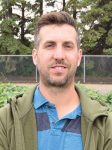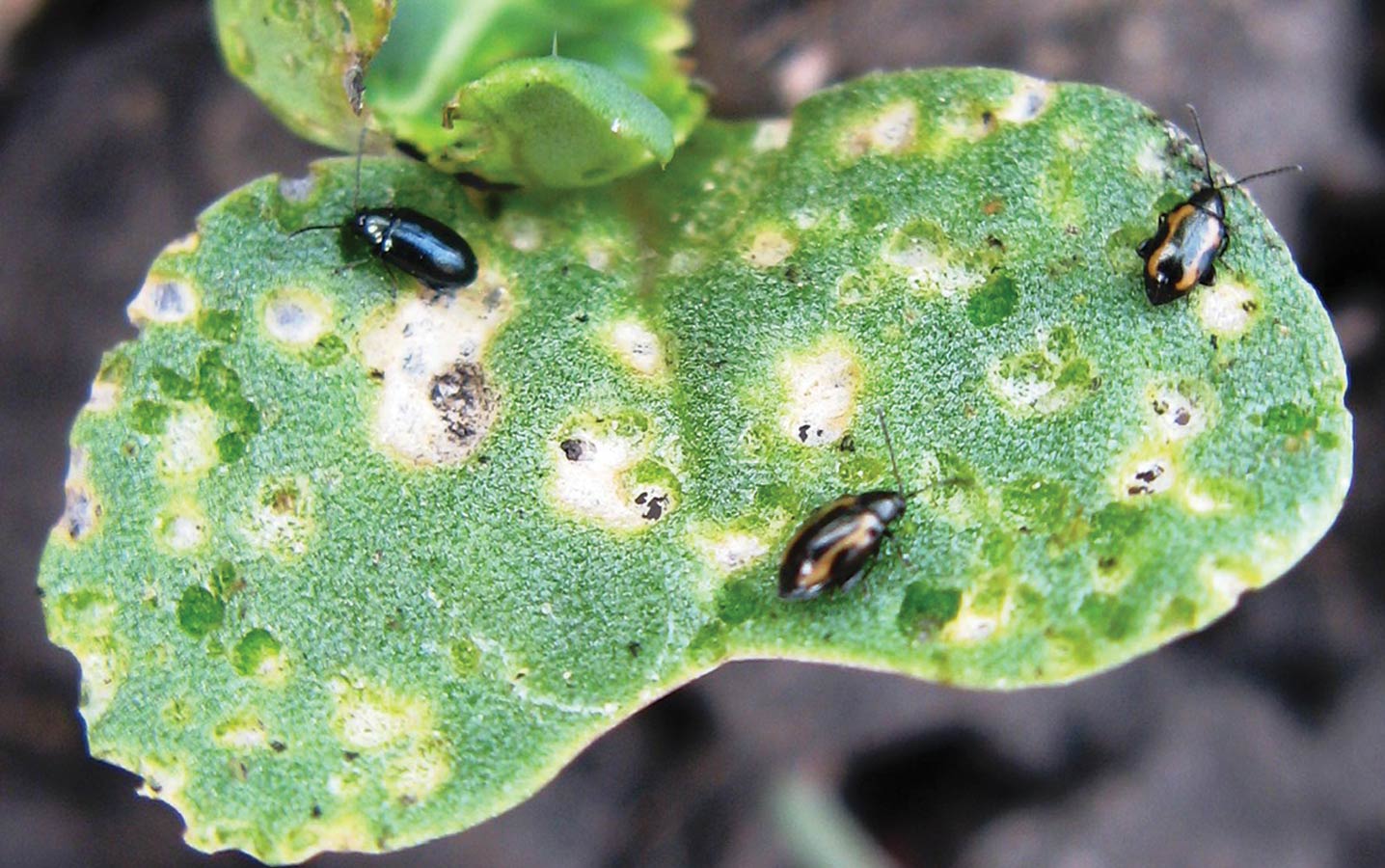I want that
 Kevin Runnalls
Kevin Runnalls
New Liskeard, Ont.
Ontario canola grower Kevin Runnalls wants Canadian agriculture to be a leader in a major disrupting technology coming to agriculture: blockchain.
“Blockchain will be a disruptor like Uber for taxis and AirBnb for hotels. Growers can work direct with end-users on price, payment and delivery, with payment, contract and traceability secured by the blockchain.”
The blockchain platform, as he describes, is based on the concept of a distributed ledger, which can be used to record and verify transactions between two parties. Each participant holds an identical ledger, which is updated as transactions occur and is verified by the underlining blockchain protocol. Because the ledger is distributed among a network, it is difficult to tamper with, thereby increasing trust in the transaction.
For Runnalls, the real disruption in blockchain will be the removal of third-party intermediaries that don’t actually add value to the product or take an active role in distribution. It has the potential to provide huge cost savings.
Runnalls is past president of the Canadian Seed Growers’ Association, which is working on a few blockchain pilot projects. “Blockchain will be a disruptor like Uber for taxis and AirBnb for hotels,” Runnalls says. “Growers can work direct with end-users on price, payment and delivery, with payment, contract and traceability secured by the blockchain.”
 Darcy Sarafinchan
Darcy Sarafinchan
Lavoy, Alta.
“I think canola with genetic resistance to flea beetles would have a significant impact on agriculture in Western Canada.”
Darcy Sarafinchan says the “biggest thing” he’d like to see is canola seed with a gene to control or ward off flea beetles. “I think canola with genetic resistance to flea beetles would have a significant impact on agriculture in Western Canada,” he says.
Neonicotinoid seed treatments are under fire around the world, he notes. “With the amount of canola acres in Canada, if you take away neonics, it will be a huge blow to the industry,” he says. “With tight margins, losing 10 to 20 per cent of canola yield to flea beetles could make it difficult to grow canola profitably. The loss could be worth hundreds of millions of dollars to the Canadian farm economy.”
He has had good experience with new seed treatments. In 2018, he seeded his first 700 acres of canola using seed treatments that did not include cyantraniliprole (Lumiderm brand in this case). He ended up having to spray all of those acres for flea beetles. His later-seeded canola had a treatment that included Lumiderm and it didn’t need a foliar spray. Later seeding might have been a factor. And, he adds, under heavy infestations you can still have flea beetle damage with Lumiderm-treated seed. Noteworthy, however, is that all current seed treatments, new or older, have a neonic as the base product. Whether new actives like cyantraniliprole still provide adequate flea beetle protection without the neonic component remains to be seen.
A better tool, Sarafinchan says, would be a genetic trait that protects against flea beetles without the need for seed treatment or foliar insecticide. “There is already genetic insect tolerance in corn,” he says. “It would be nice to see the transition into canola.”
“Nobody likes to spray insecticide,” he says. Even though spraying has to be done some times, as Sarafinchan experienced in 2018, he would prefer the genetic solution.
 Jeff Bennett
Jeff Bennett
Dodsland, Sask.
Jeff Bennett would like a do-it-yourself way to apply the data he’s collecting, especially for variable-rate (VR) fertilizer applications.
By being able to do data analysis and set VR prescriptions himself, Jeff Bennett will have more flexibility based on realistic expectations of a return. That might mean using VR on fields that will provide a return and not using it on fields where the probability of a return just isn’t there. The rationale, he says, is to “intensify” the use of the data so he can make more money.
The farm is already doing some VR, working with an outside service provider to analyze field records and maps to come up with application prescriptions. Bennett would like to do this analysis on his own. He wants the ability to make adjustments based on probabilities, field characteristics and current and forecast soil moisture. He wants to have benchmarks for each field based on farm records so he knows how VR polygons within each field will perform with low, average and high moisture.
“We have one field in particular where yield potential between zones can flip based on moisture,” Bennett says.
By being able to do data analysis and set VR prescriptions himself, Bennett will have more flexibility based on realistic expectations of a return. That might mean using VR on fields that will provide a return and not using it on fields where the probability of a return just isn’t there. The rationale, he says, is to “intensify” the use of the data so he can make more money.
“I don’t know how a DIY data-management system would look yet,” he says. “Field-by-field benchmarking might take 10 years to yield a benefit, and it won’t happen until we have enough properly-collected data.”
Reliable, trusted data is a big part of making this all work – and we may not be there yet. This past fall, Bennett had two combines working side by side in the same field. One monitor read 70 bu./ac. while working through a challenging section, the other read zero. “Likely neither was right,” he says.
 Peter Skrabek
Peter Skrabek
Teulon, Man.
“One new technology that could help get more done, when weather windows allow, is automation. A self-driving field implement will start early and go all day, even 24 hours if needed, and be predictable. “The technology is there.”
Peter Skrabek says he’s always fighting the urge to make knee-jerk reactions – whether that be in changing agronomy practices or adopting new tools and technology – in response to weather. “I go through a long process to figure out what I think is the right system for my farm, but then we have an incredibly dry spring like 2018. We had no rain in May, which I don’t remember ever happening before, and it affected the entire life of the crop. After that experience, it can be easy to lose faith in your system, but you can’t make decisions for next year based on a repeat of that. You have to go back to the averages, hoping again that you’ve made the right decisions.”
Having said that, farmers also have to question their decisions and be prepared to adapt to changing weather, changing regulations and improved technology. Farmers have to roll with a one-two approach that may seem at odds: faith in what they’re doing on one hand and willingness to change on the other. “The farmers still in business are those who can adapt,” Skrabek says.
Do you have feedback on the farmer panel? Do you want to participate in a future farmer panel? If yes, please email the editor, Jay Whetter, at whetterj@canolacouncil.org
One new technology that could help him get more done, when weather windows allow, is automation. A self-driving field implement will start early and go all day, even 24 hours if needed, and be “predictable”. “The technology is there,” Skrabek says. With his current equipment, he can drive the perimeter lap then lock it in and set the implement to finish the field – with an operator in the cab. Liability is the only hold up to true autonomy that he can see, and says it would seem backward if autonomous cars are widely adopted before autonomous field machinery.
It is part of a theme that doesn’t make sense to him. He says people, 90 per cent of which are urban, don’t seem to want technology applied to agriculture the way they want it in medicine. “I don’t think we’re embracing the true science of agriculture the way we embrace the science of medicine,” he says. “Science in medicine is praised. Science in agriculture is shunned.”





